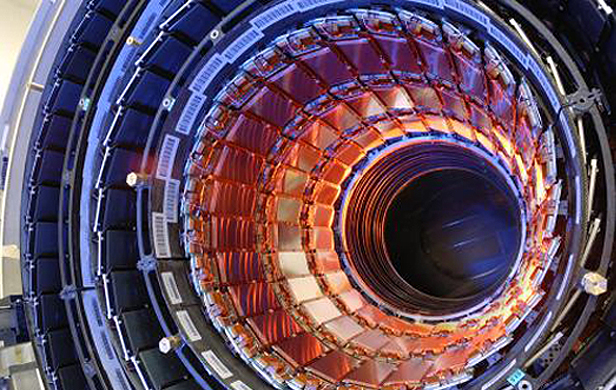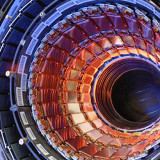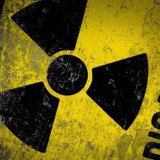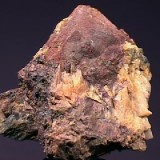
Nothing summarizes the nuclear power debacle better than the old adage, “…as we begin, so shall we go.” For half a century, the electrical power industry has been trying to make success of failure, safety of danger, and efficiency of wastefulness because it chose the wrong nuclear fuel to produce electricity from reactors. Instead of using thorium, it used uranium, and the economic, political and environmental costs of this mistake have been incalculable.
But “mistake” is technically not the correct word. The decision to use uranium rather than thorium was more a tragic misjudgment, a foolish choice based on the worst of reasons. At the end of World War II, the United States was flush with political and military power — and the atom bomb.
Uranium was the element that released the explosive power of this bomb, and it was the element favoured by the military because it produced the fissile plutonium needed for escalating the nuclear arms race that came to be called the Cold War. Prototypes of thorium reactors had been operated successfully and their safe production of electricity had already been demonstrated. This was the reactor favoured for commercial use by physicists like Alvin Weinberg, a thorium proponent (Superfuel: Thorium, the Green Energy Source of the Future, by Richard Martin). But a proliferation of thorium reactors was opposed by military minds such as Hyman Rickover, an admiral in the US navy, who wanted to preserve the dominance of uranium reactors because its byproducts could be easily weaponized — not one of thorium’s qualities. When the upper echelons of the military migrated to the corporations building nuclear reactors, they brought with them their preference for uranium, even though it was a far more unstable and dangerous fuel than thorium.
History has demonstrated this danger. The arms race effectively contaminated the energy equation so that we now have the worst of both possibilities. We have a planet loaded with nuclear bombs, massive amounts of persistent radioactive wastes, reactors capable of catastrophic meltdowns, unmanageable radioactive contamination, expensive power, terrorist threats, and weaponized political brinkmanship. We also have a continuing dependence on fossil fuels, the filthy and polluting energy that creates a host of its own messy problems.
Although most of the world’s 400-plus uranium-powered nuclear power stations have produced electricity safely, the exceptions of Chernobyl, Three Mile Island and Fukushima Daiichi have been sufficiently traumatic to make the public wary of all nuclear power. The storage and disposal of radioactive wastes, far more plentiful and enduring than from thorium reactors, continue to be an unsolved problem.
Thorium reactors, their proponents argue, are far safer than uranium reactors, are incapable of melt-downs, are much cheaper to build (most of the construction costs of uranium-based reactors are in safety features), can be scaled down to fit the energy needs of small communities, need almost no maintenance, consume all their thorium fuel, would produce only 10 percent of uranium’s radioactive wastes, and are even capable of utilizing existing uranium wastes as a supplemental fuel. Furthermore, thorium is about four times more plentiful than uranium and can be found almost anywhere (NewScientist, May 26/12).
The secret to thorium’s safety is its reluctance to become fissile — nuclear science deems it “fertile” rather than “fissile”. Unlike uranium-235, which is neutron rich and unstable, thorium’s emission of neutrons during radiation breakdown is termed “sub-critical”, not sufficiently plentiful to cause a chain reaction and an uncontrolled meltdown. To make thorium fissile enough to generate energy, neutrons must be forcibly added to it, so a simple safety feature that removes the neutron source causes a thorium reaction to die down. By using neutrons from the hundreds of thousands of tonnes of dangerous nuclear wastes created by the world’s uranium-based reactors, thorium reactors could be designed to convert most of this waste to useful energy.
Given the present threat of global climate change from the excessive burning of fossil fuels for energy, thorium appears to be a tempting option in the world’s energy equation. Thorium’s radioactive wastes would be dangerous for a mere 200 years rather than the tens of thousands of years for uranium’s wastes, and its byproducts would provide almost no fissile material for making bombs. China and India are now building models of thorium reactors with the intention of testing their promising capabilities.
The current candidate presented to the Department of Energy in the US is a so-called SSTAR thorium reactor, an acronym for “small, sealed, transportable, autonomous reactor”. It is a large cylinder about 3 metres in diameter by 15 metres long, weighing about 500 tonnes. The price for this 100 megawatt reactor could eventually be reduced to about $220 million, one-fifth the cost of a conventional uranium reactor. It would be moveable by truck, rail or ship, does not need containing walls, could be used safely within ordinary industrial buildings, or even be buried for 20-year periods without maintenance. Its size could be scaled down for specific uses — a 5 tonne thorium reactor of 1 megawatt output could provide power to a small town and cost as little as $250,000.
Thorium reactors may not be the perfect energy source. But, if we cannot find sufficient renewable power to fill the needs of our energy-hungry civilization, thorium reactors would be a far better alternative than uranium reactors, and preferable to unleashing the catastrophic environmental effects of burning fossil fuels.






 Japan, with assistance from the U.S. government, needs to do more to move spent fuel rods out of harm’s way at the tsunami-stricken Fukushima Daiichi nuclear plant, said U.S. Senator Ron Wyden on Monday.
Japan, with assistance from the U.S. government, needs to do more to move spent fuel rods out of harm’s way at the tsunami-stricken Fukushima Daiichi nuclear plant, said U.S. Senator Ron Wyden on Monday. Yet, just today, the
Yet, just today, the 